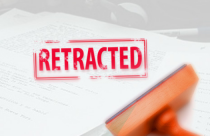Handling Citations: When to Cite Sources in Your Manuscripts

When writing your research paper, keep a list of your sources of information. You must ensure that any information you use from other sources is properly cited and referenced. This means that you must “acknowledge” the source in both the text with a citation and at the end of the paper in your references. This is important! You want to avoid plagiarism at all costs. Plagiarism simply means that the writer has used someone else’s work without giving that person proper credit. This is a serious offense. It can result in either not being published or being withdrawn after being published. It can result in disciplinary action and will most certainly have an effect on your credibility as a researcher. Enago Academy has several excellent articles on plagiarism that will help you understand and avoid it.
Here, we provide information on how you must handle citations of your sources and some of the common formats.
Types of Citations
There are three types of citations:
- In-text: This refers to the “tag” within the text itself. The format will vary according to the style guide used or a specific discipline. Some styles guides suggest using numerals, while others use author names and dates of publication. A reference list is created based on the cited text and is placed at the end of the document as “References” or “List of Citations” either numerically or alphabetically.
Two examples:
The Timber Wolf was once a great predator throughout North America.5
The Timber Wolf was once a great predator throughout North America (Smith, 1970).
The first example is from American Medical Association (AMA) style guide; the second is from the American Psychological Association (APA) style guide.
- Endnote: An endnote is much the same as an in-text citation except that it uses numerals surrounded by brackets. The reference section is simply a list of these numeric citations in reference format at the end of the paper.
- Footnote: A footnote is similar to an endnote except that the reference is placed at the bottom of the page on which the citation appears.
If you are writing a paper to be published in a journal, the author guidelines will provide you with the style to be used. If you are writing a paper for a class, your professor will provide you with that information. APA, MLA, AMA, and Chicago Manual of Style are the most commonly used styles in academic writing.
When to Cite
When you provide references, you provide some assurances that you have done your research. The reader will be better able to assess whether your information is valid. This is important to your credibility.
You need not cite every piece of information that you use, but you should become familiar with the rules outlined here. These apply to all sources, including newscasts, websites, and even television and radio programs.
There should be some balance between cited materials and original thoughts; however, this will also vary by discipline. For example, if you are reviewing a piece of art, your paper will have few citations. Most of the text will be your opinion. On the other hand, your paper on your research study will have a great number of citations that show examples of or back up your findings. In all cases, all cited material should be discussed, and all major points should be supported and cited.
Here are some basic rules for when to always cite another’s work. Remember that it is better to err on the side of caution. When in doubt, add the citation.
- Quotations. A quotation is a word-for-word duplicate of someone else’s work. Most people instinctively understand that these must be cited. Even if only one word, they must also be enclosed in quotation marks. If more than three lines, they should be offset from the rest of the text.
- Paraphrasing: Even if you put another’s ideas into your own words, it must be cited. It is not the work itself, but the original idea, that must be acknowledged. For example:
Original:
“Experienced riders instinctively understand the body language of their horses. Body language is extremely important because it’s how horses communicate. Trainers spend hours and hours doing basic groundwork, which ultimately translates to the saddle. This is a must for any rider to be able to have a good and safe relationship with her horse.”
Paraphrased:
A horse’s body language is very important to understand. Those who have been training horses for years know and understand this. Groundwork with your horse is a basic necessity to be able to understand his body language. This work will transfer directly to your riding and will make the experience safer.
The best way to begin is by looking for main points in the text and discuss them in your own words. Define any technical terms for the reader.
- Summarizing: This is much the same as paraphrasing except that it relays only the main idea and is shorter.
Example from above:
Knowing how to interpret your horse’s body language is extremely important for your relationship and safety.
- Common knowledge: Common knowledge need not be cited unless it also contains statistical or research information.
Example (need not be cited):
St. Paul is the capital of Minnesota.
Example (should be cited):
St. Paul is the capital of Minnesota and has the highest rate of multiple sclerosis in the state.
Although it is common knowledge that St. Paul is the State Capital, it is considered statistical information that it has the highest rate of multiple sclerosis in the State. This fact must be cited.
- Conclusions/supplemental information: Once cited, you need not cite the same references again in your conclusions. If you introduce new information, you must cite it. The same holds true of supplemental information.
Keep in mind that academic institutions in different countries might have different rules for citing a manuscript. Become familiar with your institution’s rules to avoid any confusion when writing your paper.
You have several sources of references and many also have several references within them that you want to use as well. How do you cite these? One way to do is by self-checking them using online plagiarism checker. Share your thoughts in the comment section below!










